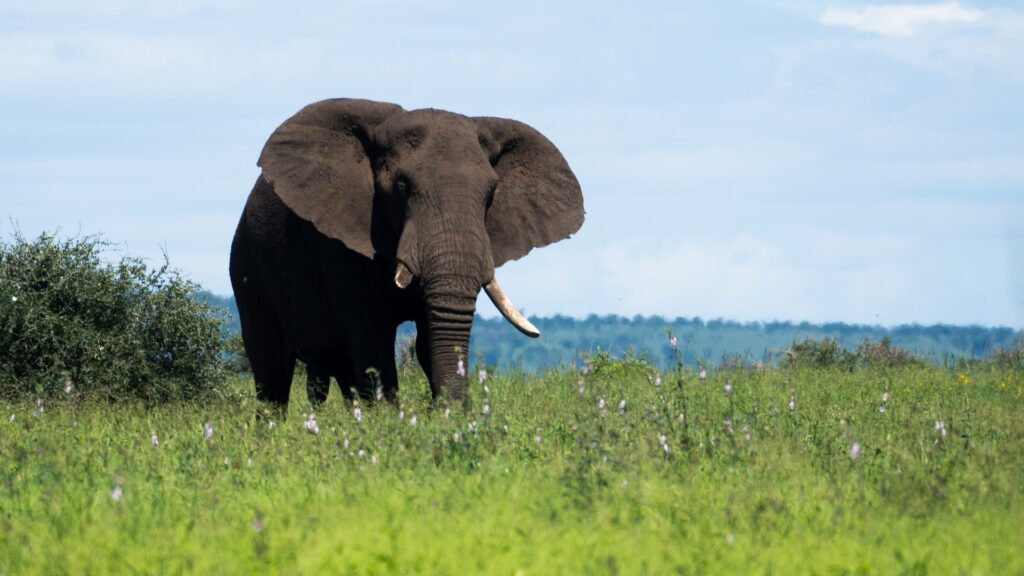The South Africa Biodiversity & Ecotourism program is the second longest-running education abroad program in the College of Agriculture & Life Sciences, celebrated 20 years in June 2022.
Program History
Started in 2002 by Urs Kreuter and co-led by several faculty members, including Richard Teague, Toby Hibbitts, Brad Wilcox, Bob Shaw, and Bill Rogers, this summer program has an impressive history:
- Offered 15 times
- Taken by over 220 TAMU students to South Africa
- Traveled between 1200-3500 miles during each month-long session
- Visited:
- South Africa: The Cradle of Humankind, Kgalagadi National Park, Cape Town, Port Elizbeth, Kosi Bay, Kruger National Park, Polokwane, and Mapungubwe
- Botswana: Lesotho, Swaziland, the Okavango Delta and Moremi and Chobe National Parks
- Zimbabwe: Victoria Falls

This experiential program exposes participating students to a wide array of diversity including biological, cultural, and landscape diversity in South Africa and adjoining countries. In addition to the summer program, Toby Hibbitts started a three-week winter-break program in 2010-2011 and has offered it 5 times for over 70 students. In combination, these two programs have provided a biodiversity-related education abroad biodiversity experience in South Africa to 300 TAMU students.
2022 Program
In 2022, the program was run by Urs Kreuter and Toby Hibbitts, and included 14 TAMU students. The program had to be somewhat modified from previous years to accommodate Covid-related travel constraints. It started in the Cradle of Humankind near Krugersdorp, which has among the oldest Australopithecus africanus and Homo sapiens fossil records. We also visited South Africa’s Constitutional Court (equivalent to the Supreme Court), where we were able to enter and learn about some of the high-profile pivotal cases that have been and are being heard.
From there we traveled to Eswatini, the last absolute monarchy in Africa, and spent four days learning about the ecological and cultural aspects that differentiate it from South Africa. Then we drove to the world-renowned Kruger National Park staying at the Savanna Science Leadership Initiative camp for six days. There we met Lawrence Kruger who took us on daily field excursions including a close encounter with a curious bull elephant; the students named Lawrence “Savanna Jesus” because of his captivating personality, vast knowledge of savanna ecology, and “near ability to walk on water.” This was followed by three nights at the Sand River Bush Camp and daily 4-hour walks with armed and very knowledgeable field guides among the plethora of the Kruger’s wild animals; this included close encounters with African buffaloes, black rhinos, and lions.
From the Kruger National Park, the program continued to the Southern African Wildlife College for five nights. While there, we conducted daily field trips to local communities, private nature reserves, wildlife rehabilitation and reptile centers, and the Blyde River Canyon – the world’s fourth-deepest canyon.
The last five-night port of call was Ivy Safaris located near Polokwane. From there we embarked on one last field trip to Mapungubewe where South Africa borders Botswana and Zimbabwe at the confluence of the Shashe and Limpopo Rivers, which is known as part of Southern Africa’s ancient Monomotapa Kingdom. While at Ivy Safaris some of the students decided to also experience an African hunt, bagging several plains game species in the process.
All-in-all, the program was highly successful and was described by many students as life-changing. Some are considering returning to South Africa for graduate studies; three previous participants have completed M.S. degrees in South Africa.